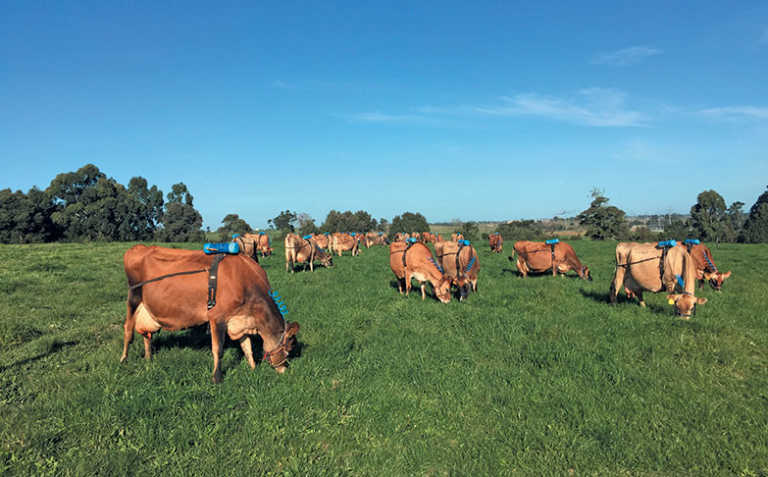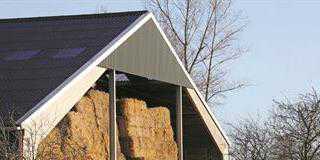
Photo: Courtesy of Josef van Wyngaard
Over the past few years, the livestock industry has been increasingly vilified due to its contribution to greenhouse gases, resulting in movements such as ‘Meat-Free Monday’, as well as a rise in vegetarianism.
Josef van Wyngaard, a doctoral student from the University of Pretoria, has found, however, that the methane output of pasture-based dairy cattle in South Africa is much lower than the estimated values derived from the Intergovernmental Panel on Climate Change’s (IPCC) values in 2010.
Van Wyngaard, who started his research in 2015, said that he found that methane emissions of pasture-based Jersey cattle were 7% lower than the IPCC-derived values.
Regardless of whether dairy cattle are pasture-based or on mixed rations, his findings can now be used to calculate more accurate values for dairy cattle in general, and can also be used to more accurately estimate values for other ruminants, such as sheep, goats and beef cattle.
“The important factor to consider when interpreting methane emissions is not the breed or kind of animal under analysis, but the ratio between dry matter feed intake and the volume of methane emitted by the animal,” Van Wyngaard explained.
The study
Van Wyngaard used the sulphur hexafluoride (SF6) trace gas technique to measure methane emissions of Jersey cows on high-quality kikuyu pasture at the Western Cape Department of Agriculture’s Outeniqua Research Farm in George.
“With the use of a custom harness and halter, we fitted a small tube to the nostrils of each cow to capture methane gas. The gas was then collected in an evacuated canister on the back of the cows, before concentrations were determined in the laboratory. The cows had to wear the equipment for eight consecutive days,” Van Wyngaard explained.
He said that methane emissions were measured at the nostrils or mouth areas, and not the anuses of the cows, since contrary to general perception, 95% to 97% of methane gases are emitted via the nostril or mouth area through belching.
Using the SF6 technique to measure methane emissions is difficult, with Van Wyngaard losing six months’ worth of data because of an error in the manner in which the equipment was set up.
“I have been working closely with the Australians, as they are currently the leaders when it comes to using this technique. When I told them that my data seemed flawed, they knew exactly what I was doing wrong, as they had apparently been struggling with the same thing for three years before realising their mistake,” he said.
Additional findings
In 2016, Van Wyngaard started two other trials aimed at mitigating methane production in dairy cows.
In the first study, Jersey cows received a maize-based concentrate in the milk parlour, with the aim of increasing starch intake and, in effect, reduce roughage intake, which is associated with higher levels of methane production.
Cows receiving a treatment of 8kg of feed concentrate/day produced 30% less methane/kg of energy-corrected milk produced, than the group of cows that received no concentrate. Another test group consisted of cows receiving 4kg of feed concentrate/day.
However, these results were not as promising, as this group’s methane production was similar to that of the control group.
Van Wyngaard conducted this trial on kikuyu pasture in summer, and ryegrass in winter, and determined that pasture quality did not make a difference to the results.
In the second study, the methane-mitigating potential of nitrate was analysed.
“Many compounds have the ability to suppress enteric methane production by ruminal micro-organisms.
I chose nitrate, because it has been found to have a long-lasting impact, whereas the impact of some of the other compounds, such as essential oils, has been found to last only for a few weeks before animals adapt to the treatment, and methane production returns to normal.
“Some of the compounds are also known to have a negative impact on production, which is not the case with nitrate,” Van Wyngaard said.
Cows in the study received 6kg of maize-based dairy concentrate/ day in the dairy parlour, with no nitrate, 1,75% nitrate or 3% nitrate.
Van Wyngaard is still awaiting the results, but expects the cows that received the concentrate with 3% nitrate to have produced 20% to 25% less methane than cows that received the concentrate containing no nitrates.
The cost of change
Van Wyngaard hopes to use these results to vindicate farmers by the time carbon taxes are introduced in 2020. However, he does not see carbon tax as negative, but rather as a
motivator for farmers to contribute to the solution to global warming, while also increasing animal efficiency and profit at the same time.
“Farmers should not be blinded by what it would cost to reduce carbon emissions of cows, but rather use mitigating strategies to avoid the payment of carbon taxes, and also to prove to consumers that they are not the culprits they have been made out to be when it comes to greenhouse gas emissions,” he said.
He added that methane production was associated with poor production efficiency, with the gas accounting for 12% to 15% of gross energy intake losses in animals.
By reducing methane production, farmers would save money by producing milk or meat more efficiently.
Since this research is the first of its kind on dairy cattle in Africa, Van Wyngaard hopes it will establish the Outeniqua Research Farm as a hub for methane measurements for the rest of the continent.
“I hope to use the experience gained through this research to train researchers to measure methane production of livestock in their own countries and, in effect, generate more representative data of the impact of their animals on global warming.
This will become increasingly important as the UN Framework Convention on Climate Change expects countries to report on their emission statuses every two years.
“One of the problems at the moment is that data derived from IPCC values are not necessarily applicable to the farming methods on the continent. By getting more exact data, we will be able to make better decisions over what needs to be done to combat global warming,” he said.
Email Josef van Wyngaard at [email protected], or phone him on 082 336 0626.










